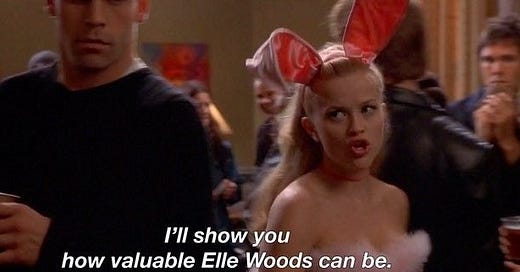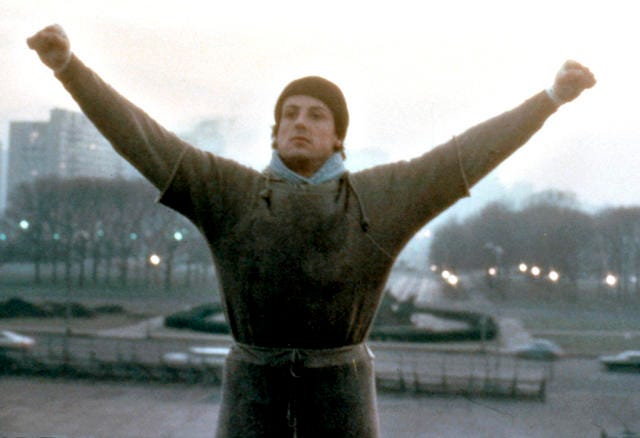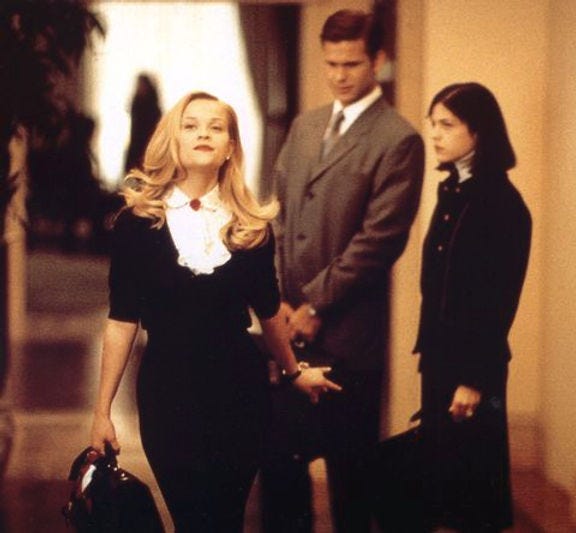The Fantasy
Some of my favorite movies, both as a child and even now, contain what I call the "self-improvement montage."
This montage is a series of powerful scenes that show the main character's self-empowering strides toward growth and transformation after facing failure or extreme opposition.
For example, in Legally Blonde, the infamous quote, “I’ll show you how valuable Elle Woods can be,” catapults a montage set to the song “Watch Me Shine” by Joanna Pacitti. If your eyes and ears have not been graced with this scene, you’re missing out on the most significant three minutes of cinema– possibly ever.
However, Legally Blonde is not alone in the iconic montage genre.
Rocky Balboa's gritty training sequence in Rocky paired with “Eye of the Tiger” has become a montage for the history books. Furthermore, Andy Sachs's difficult transformation from a naïve assistant to a self-worthy professional in The Devil Wears Prada is expressed through a changing wardrobe montage set to Madonna’s “Vogue.”
The more I realized the omnipresence of this cinematic device, the more I wondered:
Why are these scenes so universally adored and remembered?
I decided to “research” this device (a.k.a. rewatch all my favorite films). Through this study, I found that any great self-improvement montage highlights the sacrifices and hard work required for personal growth.
Furthermore, they emphasize that success and discovering worthiness often come at a cost, which led me to an even more important question that inspired this article:
If we love watching movies in which others fail, get back up, and try again, why don’t we enjoy doing this more ourselves?
The Reality
Self-improvement montages have become integral to storytelling as they capture the essence of personal growth and triumph. These scenes inspire us to believe in our capacity for change and reflect the universal truth that self-improvement is a journey worth taking.
However, movies only capture the essence of this journey, not the full reality. The distance between viewing a character and actually living in the struggle allows for a level of detachment, making it easier to appreciate the triumphs without experiencing the downsides ourselves.
When facing our own challenges, the fear of failure and uncertainty make the process daunting. Movie endings are promised, but our journeys have no guarantee. Because of this uncertainty, once we fail, we pretend like we didn’t or give up trying altogether.
Real personal growth requires immense failure, hardship, discipline, and grit over an elongated period—and it isn't often set to the tune of a three-minute pop banger.
In movies, failure is the unmistakable spark that sets the self-improvement montage in motion. In the real world, failure is the final straw that shuts many down to the possibility of trying again.
The Challenge
Failure can fill you with shame, vulnerability, and regret. But it is not the opposite of success. In actuality, it is an integral part of the journey toward it.
When I fail, which happens daily, I try to do two things:
Laugh, cry, scream, or call my mom (variable based on the failure’s severity)
Then, I envision myself in my own self-improvement montage
This may sound silly, but as a recovering perfectionist, I do not enjoy failure. So, I allow myself a brief moment to let my emotions out. Then, I move forward and try to adopt the confidence and growth mindset exhibited in movies.
Psychologist Carol Dweck, who originally popularized the term growth mindset, encourages individuals to view failure “not as evidence of inadequacy but as a chance to develop resilience and learn from setbacks.” For me, the steps above are a practice in re-training my brain to accept failure as nothing more than the spark for my success.
So, I want to challenge you as I continue to challenge myself. The next time you face an immense setback, visualize your self-improvement montage. Then, revisit this idea as much as necessary to train your brain to use failure as a stepping stone toward your desired outcome.
This mindset shift may seem childish, but adopting it is easier said than done when faced with failure. However, turning on a pop song and pretending I have an ex-boyfriend to beat in law school often helps me get halfway there.
I know it is exceedingly challenging to fail repeatedly and find the courage to stand back up. So, when I feel like giving up and Madonna’s “Vogue” is no longer working, I lean on one of my favorite quotes by Brené Brown:
“You either walk inside your story and own it, or you stand outside your story and hustle for your worthiness."
I don’t know about you, but I’d rather own my story and its many failures than let anyone else decide how valuable I can be.
Thanks for reading.
As always, stay curious.









This is so timely with what I’m going through atm. It’s time for my self improvement montage 💕 thanks for this
This made me think what movie have I watched, with a self improvement montage, that inspired me to keep going. It is absolutelythe movie Rudy! He believesi n himself, fails time after time, and ultimately overcomes adversity. The ending gets me everytime! Love your article this month. Thank you for your insightful thoughts that I will carry with me today ❤️